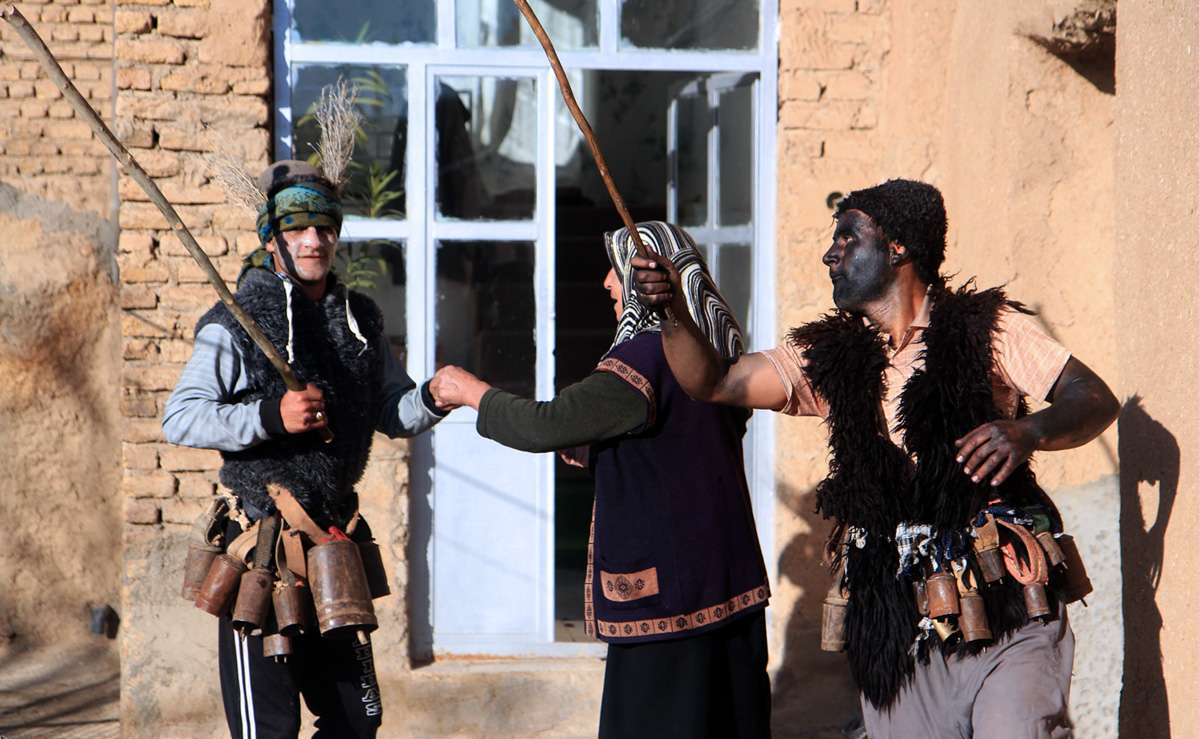Following a request by Afghanistan and some African countries, discussions are underway to inscribe the rainmaking ritual (Baran Khahi), of Kaburan village, Tafresh, on UNESCO’s intangible heritage list as a multinational element.
The rainmaking ritual is called Kusa. It has already been inscribed on the Iran National Heritage List.
The case for the inscription of the ritual was proposed to UNESCO in April and a nomination was made.
Markazi provincial director-general of cultural heritage, handicrafts, and tourism organization (ICHHTO), Seyed Mohammad Hoseini, announcing the news, stated that representatives of the UNECSO intangible cultural heritage center had voiced concerns over the ritual losing its authenticity and that it should be inscribed as a “multi-national element”, CHTN quoted him as saying.
Due to the arid climate of the region, the rainmaking rituals “are among the most significant cultural phenomena that is native to Iran”, the official asserted.
Ritual
The ritual was performed to celebrate the end of the cold season or winter and to usher in the promise of spring; the ritual is symbolic among shepherds “as the defeat of darkness by light”. It was also believed to have mythical function of protecting cattle from diseases and of stimulating fertility.
In southernmost regions where the ritual is practiced, the Kusa (also known as Kusa-galin, Naaqaaldi, etc.) is not ascribed to any particular date during the winter months; rather it is performed as rain magic at any time needed.
The celebration of the Kusa festival has been reported by early Islamic authors such as Masudi and in some more recent, secondary texts. Even Zoroastrian texts that mention the ritual appear to be based on Islamic sources, according to Encyclopedia Iranica.
Medieval Folkloric Character
Kusa is also the name of the fictitious beardless man, characterized by little or no beard. He is a carnival character of both the medieval and modern folkloric traditions of Central and Western Persia.
The custom was particular to old Fars region of Iran and Iraq and was practiced in Shiraz in Abu Rayhan Biruni’s days. It was performed during the spring festival immediately after the Farvardagan days, when the Sun entered the sign of the Ram. On this day an ugly, thin-bearded (also: funny, old, one-eyed, toothless) man, dressed in rags, appeared in the streets riding a donkey or a mule, holding a crow in one hand and a fan in the other. He bade the winter farewell and announced the coming of spring, demanding money for his propitious news. Despite the still cold weather Kusa, pretended to be hot fanning himself with his fan. The people threw water, snow, and ice on him and, in return, he would throw muddy, staining muck at those who refused him a gift. The tradition dictates that Kusa is only allowed to wander around until the call for afternoon prayer; if caught afterwards, he risks getting a beating.
Modern Folkloric Character
The modern day Kusa rite is quite different from its medieval counterpart, and is typically of a rural and pastoral character. The rural Kusa is largely a winter festival. It’s mostly observed around the 10th of Bahman (January 30), which was once the date of the Sada festival, the most important Iranian winter festival, celebrated by kindling of fires, and is currently the turn of the Great and the Small Chelle in popular calendar. There are also reports of the rite to be performed on the second day of Bahman (January 22).
The term Chelle also refers to any forty-day period both in Persian folklore and in Sufism. The “great Chelle” period (December 22 to January 31, 40 full days), followed/overlapped by the “small Chelle” period (January 30 to February 19, 20 days + 20 nights = 40 nights and days).
The groups of mummers, or the troupes of actors (also known as guisers) who visit people in disguise, walk from house to house, greeting their hosts, staging a sort of a play, sometimes performing a fertility magic rite, and collecting gifts in kind or in money are all part of the festival. Kusa is usually among the characters in the troupe accompanied by his rival (the white and the black Kusa), his bride (a boy disguised as a girl), a number of helpers, and some musicians. The scenario includes a fight (in the form of chub-baazi) over the bride between Kusa and his rival, possibly her kidnapping, the death of Kusa, the girl’s lament over his body, and his revival. This tradition may be traced back to the age old death-and-resurrection myth.
The animal features are clearly visible in the costume and attitudes of Kusa, who wears a horned mask, a hairy sheep and goatskin coat, sometimes a tail, and imitates the animals’ bleating.
In an account from the village Ahu-Tappeh of Hamedan, Kusa makes the ewes and female goats give birth to healthy lambs, by kicking at their barn door and giving some wool from his beard to the owner, who would place it above the barn door.
The songs sung by the Kusa group comprise wishes of well-being for the household, a description of its prosperity, a plea for a gift, blessings and gratitude to the donors (or a curse for the mean ones).
The most detailed information on the modern day Kusa rites comes from western, northwestern, and central Persian villages (the regions of Maku, Khoy, Khalkhal, Zanjan, Abhar, Saveh, Ashtian, Arak, Mahallat, Khomeyn, Hamedan, and Nahavand) with Persian, Turkish, Kurdish, and Lori-speaking populations. Testimonies by other authors confirm the existence of the custom among Iraqi Kurds of Solaymaniyeh and the Qahsqaei tribes of Fars.
The urban Kusa of medieval sources seems to be close to Mir-e Nowruzi (the New Year Prince), who has a long-lasting tradition in the Middle East, and to his modern continuation Haji Firuz. There are striking parallels between the Kusa and East European Christian caroling traditions.


